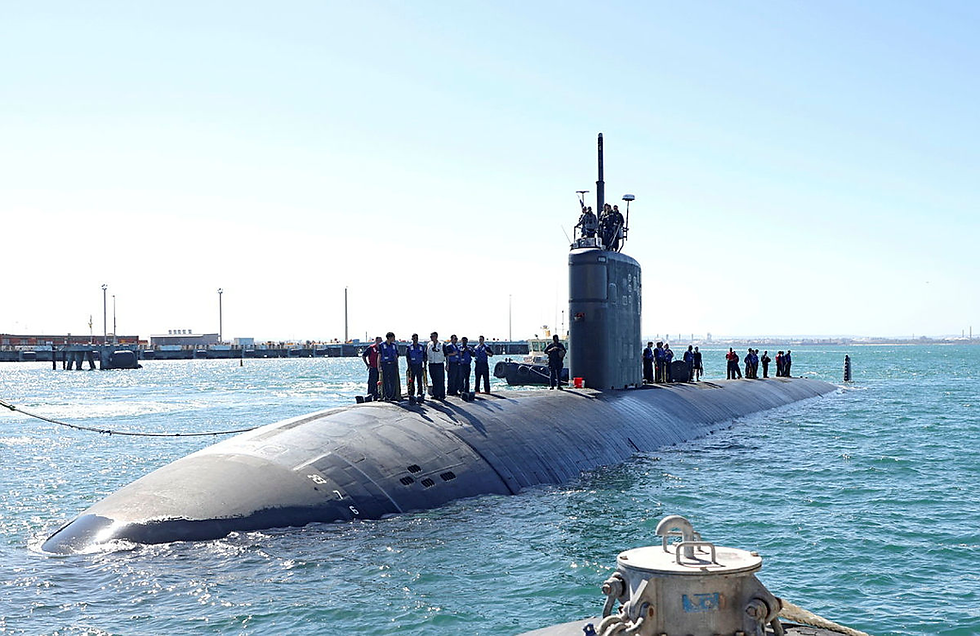Response to Professor Hugh White's 'Fatal Shores: AUKUS is a grave mistake'*
- Jennifer Parker
- Jul 3, 2024
- 4 min read
June 2024 | Jennifer Parker
Image: Los Angeles-class submarine USS Annapolis (SSN 760) arriving alongside Diamantina Pier at Fleet Base West, HMAS Stirling, WA. Photo credit: Defence Images
The decision to acquire nuclear- powered submarines represents a significant milestone in Australia’s defence capability. Both the cost and the transition to a nuclear- powered capability in a country without a civilian nuclear industry warrants robust debate. There are pros and cons associated with the acquisition decision and its associated ‘optimal pathway’.
The core of the debate really centres on two elements. Is the opportunity cost of Australia’s acquisition of nuclear- powered submarines worth the monetary and other costs? And can the risk be managed? On these two points, reasonable arguments can be progressed on either side. Unfortunately, White’s well- written, 46- page article does not progress the debate. White’s argument, framed entirely in the negative, appears to misrepresent facts, to take liberties with assumptions represented as fact and to misunderstand key aspects of submarine employment and the requirements of a nation such as Australia that is an island dependent on maritime trade.
An 800- word rebuttal cannot engage with all the issues within the piece, but I hope to encourage readers to cast a careful eye over its arguments. Here I focus primarily on some of the many problems with White’s interpretation of maritime strategy and operations. White is correct to suggest that Australia needs to articulate a strategy on which capability decisions are based, as I argued in my 2023 report, An Australian Maritime Strategy: Resourcing the Royal Australian Navy. However, he misunderstands essential elements of maritime strategy. For example, he suggests that an alternative to the acquisition of submarines could be to ‘focus our defence closer to home, relying on a shallower but denser defensive shield’. The obvious flaw in this argument is that Australia is a maritime nation: 98 per cent of our trade passes through the maritime domain, and 91 per cent of our fuel is imported, including all our aviation fuel to support the Royal Australian Air Force’s F- 35 operations, inevitably required to support White’s suggested ‘shallower defensive shield’. Why would an adversary attack Australia, when our trade – or, more accurately, our critical seaborne supply – is left undefended and ripe for the picking, as White suggests would be prudent? As the famed maritime strategist Alfred Thayer Mahan highlights, ‘wars are won by the economic strangulation of the enemy from the sea’, particularly wars against island nations.
White’s misunderstanding of maritime strategy is underpinned by erroneous assertions that the defence of seaborne trade is no longer feasible. The explanation given for this bold but unjustified and unqualified statement is that ‘technological trends' have made ships of all kinds easier to find and hit’. Of course, as we have seen in the Red Sea, the proliferation of uncrewed explosive surface and aerial vehicles alongside anti- ship cruise missiles has increased the complexity of operations for warships in the littoral environment, which is the area of sea that can be influenced by threats from land. But unlike the Russian experience in the Black Sea, efforts of the United States and other allies and partners show that a well- defended ship with a well- trained crew can defeat these capabilities.
As offensive capabilities evolve, so do counter-capabilities. This is the historical dance of naval warfare.
Quick to dismiss the value of nuclear- powered submarine operations, White suggests that the only argument put forward to support the need for Australia to acquire nuclear- powered submarines is the protection of maritime trade. It is not. The presence of unlocated nuclear- powered submarines significantly complicates an adversary’s calculations and serves as a deterrent.
White’s dismissal of the role of nuclear- powered submarines in the protection of maritime trade again misunderstands the fundamentals of maritime strategy and maritime operations.
White suggests that eight submarines cannot protect the ‘over 17,000 voyages to Australian ports from overseas’ and that submarines are ‘very effective for attacking ships " but " not at all suited to defending them’. On the former: Australia does not need to protect all ships that visit Australian shores, it only needs to protect essential seaborne supply, comprising the fuel, ammunition and critical supplies that make up a much smaller subset of these voyages. On the latter: of course submarines will not be escorting ships along key trade routes. One look at Australian geography would show that carefully positioned submarines in the vicinity of key chokepoints would put at risk any adversary seeking to hold Australian seaborne supply at risk.
The length of this piece only permits a surface- level summary of some of the flaws in White’s case against the delivery of AUKUS Pillar 1, of which there are many. While there are strong arguments for and against Australia’s acquisition of nuclear- powered submarines, White’s logic misunderstands the capability, its employment and the basic tenets of maritime strategy, and so must not be allowed to proceed unchallenged.

コメント